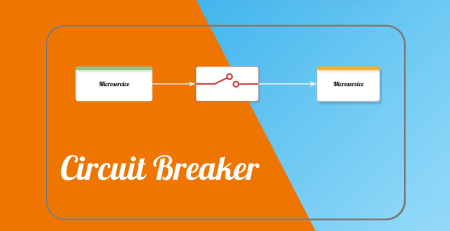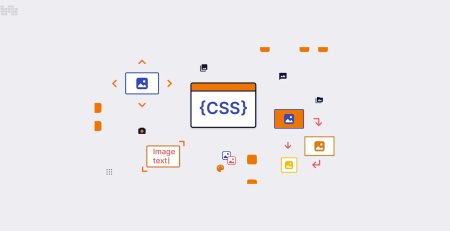Java Web Services: A Guide to Ensuring Reliability and Stability
Table of Contents
Introduction
Java web services are essential to contemporary software development because they offer a scalable and adaptable method of integrating online apps and services. To keep consumers and stakeholders trusting these web services, however, their stability and dependability must be guaranteed. We will examine techniques, best practices, and code samples in this extensive book to guarantee the stability and dependability of Java web services.
Any online service must have both stability and reliability in order to function consistently and reliably under a range of circumstances. Reliability in Java web services refers to the service’s capacity to carry out its intended tasks reliably and consistently over an extended period of time. Contrarily, stability refers to the service’s capacity to continue operating and responding even in the face of unforeseen malfunctions or heavy traffic.
Designing Resilient Java Web Services Architecture:
The architecture of Java web services is the cornerstone of their dependability and stability. Modularization, loose coupling, and scalability are examples of best practices that may help you create a resilient architecture that can adjust to changing needs and smoothly handle traffic variations. Let’s look at an illustration of how to create a robust Java web service architecture:
package com.example.service;
import javax.ws.rs.ApplicationPath;
import javax.ws.rs.core.Application;
@ApplicationPath("/api")
public class MyApplication extends Application {
// Configuration for the JAX-RS application
}In this example, we define a JAX-RS application class MyApplication that serves as the entry point for our RESTful web service. By specifying the @ApplicationPath annotation, we define the base URI for our service (“/api”), which will be used to access the resources exposed by the service.
Implementing Robust Error Handling Mechanisms:
An essential component of guaranteeing the dependability of Java web services is error handling. You may respond to customers meaningfully and graciously in the event of unforeseen problems by putting strong error handling methods in place. Let’s see how error handling is implemented in a JAX-RS resource class:
package com.example.resource;
import javax.ws.rs.GET;
import javax.ws.rs.Path;
import javax.ws.rs.core.Response;
@Path("/hello")
public class HelloResource {
@GET
public Response sayHello() {
try {
// Business logic to say hello
String message = "Hello, world!";
return Response.ok(message).build();
} catch (Exception e) {
// Handle unexpected errors
return Response.serverError().entity("An error occurred").build();
}
}
}The JAX-RS resource class HelloResource is defined in this example, and its sayHello() function returns the message “Hello, world!” To capture any unexpected mistakes that could arise when the business logic is being executed, we employ a try-catch block. If something goes wrong, we send back an error message along with a 500 Internal Server Error response.
Testing Strategies for Ensuring Reliability:
A crucial component in guaranteeing the stability and dependability of Java web services is testing. Through the use of thorough testing techniques, like as unit, integration, and end-to-end testing, you can confirm the accuracy and resilience of your service in a variety of scenarios. Let’s look at an example of using JUnit to write unit tests for a JAX-RS resource class:
package com.example.resource;
import static org.junit.Assert.assertEquals;
import javax.ws.rs.core.Response;
import org.junit.Test;
public class HelloResourceTest {
@Test
public void testSayHello() {
HelloResource resource = new HelloResource();
Response response = resource.sayHello();
assertEquals(200, response.getStatus());
assertEquals("Hello, world!", response.getEntity());
}
}In this example, we write a unit test testSayHello() for the sayHello() method of the HelloResource class. We instantiate the resource class, invoke the sayHello() method, and assert that the response status code is 200 (OK) and the response entity is “Hello, world!”.
Monitoring and Logging for Stability:
Monitoring and logging are essential tools for ensuring the stability of Java web services. By monitoring key performance metrics and logging important events and errors, you can identify issues early and take proactive measures to prevent service disruptions. Let’s look at an example of implementing logging in a JAX-RS resource class using the SLF4J logging framework:
package com.example.resource;
import org.slf4j.Logger;
import org.slf4j.LoggerFactory;
import javax.ws.rs.GET;
import javax.ws.rs.Path;
import javax.ws.rs.core.Response;
@Path("/hello")
public class HelloResource {
private static final Logger LOGGER = LoggerFactory.getLogger(HelloResource.class);
@GET
public Response sayHello() {
try {
LOGGER.info("Saying hello");
// Business logic to say hello
String message = "Hello, world!";
return Response.ok(message).build();
} catch (Exception e) {
LOGGER.error("An error occurred", e);
// Handle unexpected errors
return Response.serverError().entity("An error occurred").build();
}
}
}In this example, we define a SLF4J logger LOGGER in the HelloResource class and use it to log informational and error messages. We log a message “Saying hello” before invoking the business logic to say hello, and we log an error message and stack trace if an unexpected error occurs.
Security Measures for Protecting Java Web Services:
Java web services must be highly secure to ward against security risks, illegal access, and data breaches. The integrity and confidentiality of your service and its data may be guaranteed by putting security mechanisms like encryption, authentication, and authorization into place. Let’s look at an example of how to use the @RolesAllowed annotation to provide basic authentication for a JAX-RS resource class:
package com.example.resource;
import javax.annotation.security.RolesAllowed;
import javax.ws.rs.GET;
import javax.ws.rs.Path;
import javax.ws.rs.core.Response;
@Path("/hello")
public class HelloResource {
@GET
@RolesAllowed("ADMIN")
public Response sayHello() {
// Business logic to say hello
String message = "Hello, world!";
return Response.ok(message).build();
}
}In this example, we use the @RolesAllowed annotation to restrict access to the sayHello() method of the HelloResource class to users with the “ADMIN” role. Users without the required role will receive a 403 Forbidden response if they attempt to access the method.
Implementing Circuit Breaker Pattern for Fault Tolerance:
The Circuit Breaker pattern is a powerful tool for ensuring the reliability and stability of Java web services by preventing cascading failures and improving fault tolerance.
By implementing circuit breakers, you can detect and handle failures in external dependencies gracefully, preventing them from impacting the overall stability of your service. Let’s look at an example of implementing a circuit breaker using the resilience4j library:
package com.example.service;
import io.github.resilience4j.circuitbreaker.CircuitBreaker;
import io.github.resilience4j.circuitbreaker.CircuitBreakerConfig;
import io.github.resilience4j.timelimiter.TimeLimiterConfig;
import java.time.Duration;
import java.util.function.Supplier;
public class HelloService {
private final CircuitBreaker circuitBreaker;
public HelloService() {
CircuitBreakerConfig config = CircuitBreakerConfig.custom()
.failureRateThreshold(50)
.waitDurationInOpenState(Duration.ofMillis(1000))
.permittedNumberOfCallsInHalfOpenState(2)
.slidingWindowSize(10)
.build();
this.circuitBreaker = CircuitBreaker.of("hello", config);
}
public String sayHello(Supplier<String> supplier) {
return circuitBreaker.executeSupplier(supplier);
}
}In this example, we define a HelloService class with a sayHello() method that accepts a Supplier<String> as a parameter. We use the resilience4j library to create a circuit breaker with custom configuration parameters, including the failure rate threshold, wait duration in open state, permitted number of calls in half-open state, and sliding window size. We then use the circuit breaker to execute the supplier function, which represents the business logic to say hello.
Conclusion
Delivering high-quality software that satisfies user and stakeholder demands requires guaranteeing the stability and dependability of Java web services. Building resilient and dependable web services that offer a seamless user experience can be achieved by adhering to best practices, putting in place strong error handling mechanisms, carrying out extensive testing, keeping an eye on performance metrics, putting security measures in place, and utilizing patterns like the Circuit Breaker pattern. With any luck, this tutorial has given you useful advice and real-world examples to help you make sure your Java web services are stable and dependable.











Leave a Reply